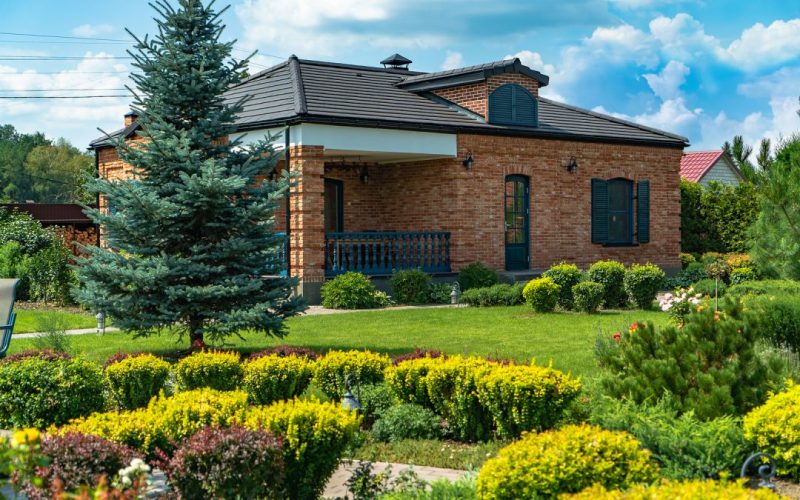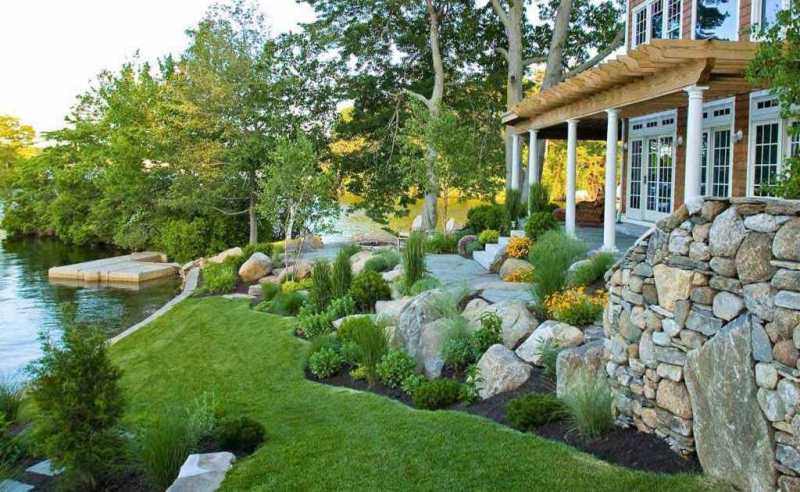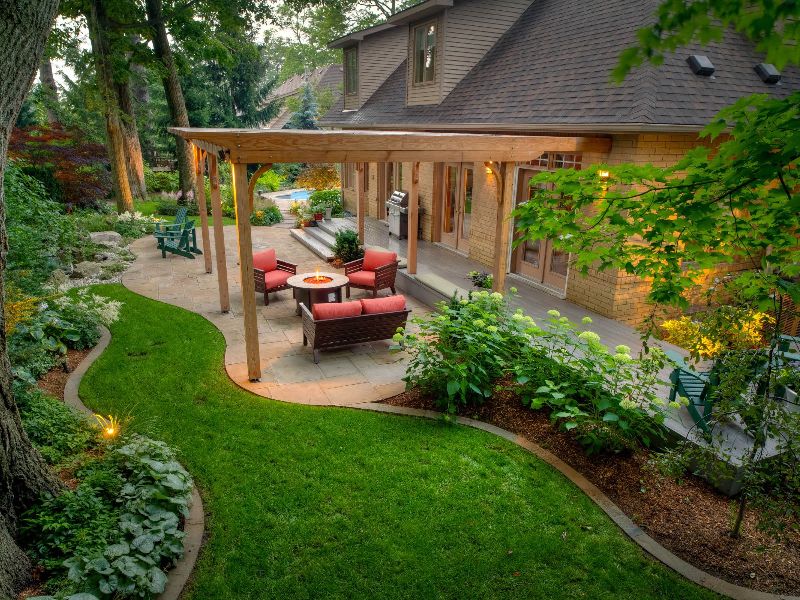Good gardens don’t just happen; they’re the results of good planning and months of observation. These observations should be made in all four seasons to understand your outdoors better.
It is suggested that you get to know your property better over the course of time before you commit to any major designing.
Start by observing the way the sunlight hits your property throughout the year, how water flows, what will be the right place for your patio, vegetable garden, flower beds and pool, or where additional privacy is needed.
CREATE A PREMILNARY MAP
First of all, you need to draw a rough sketch of the outdoor area. Sketch the property lines, orientation of the house, pool area, driveway, and other paths. You need to measure the correct distance of the property, starting from the front corner and then transfer these measurements to the map.
Measure your outdoor area from the house to the property’s boundaries. Start at the front corner of the house. Pick a scale of measurements that suits you and stay consistent throughout the drawing process.
Locate doors and windows, gas, electric, gutter and cable utilities, trees, and vegetable areas and you need to study your neighborhood to figure out if any of your neighbors’ features near the property line would affect your design, such as large trees, fences or buildings.
You have to determine all the needs and wants of the landscape.
Make a list. Do your kids need a play area? Do you have enough space for a pool? Do you want to grow vegetables? Do you want a dining area for the guests? Do you need an outdoor fireplace for evening tea? Consider all the things and write them down. Then draw a sketch with thoughts of where you want to place things. You don’t need to be a master at making plans, you can easily play around with ideas that pop up in your mind, without a lot of time and commitment.
SITE ANALYSIS

Note the changes that occur in your property throughout the year. Site analysis isn’t the work of a single day. A perfect landscape garden requires patience.
Try to figure out your property’s strengths and weaknesses. Note all significant features like sunny and shady spots, prevailing winds, drainage problems, existing vegetation, good and poor views, and all utilities and easements. Make several copies of the base map with site analysis notes
Study the sun and wind patterns and apply this information for finding the right location for everything. It’s better to make your patio on the east side of your house. This will keep the evenings protected from the hot rays of the setting sun and thus make your evening tea more delightful. If you want a fireplace in your garden, you need you find the right place and angle for your fireplace so that the whistling winds don’t put out the fire.
Once you’ve completed your site analysis. Draw a clean map of the outdoors keeping the base map in mind.
START SMALL
An important part of creating a landscape is starting slow. Don’t try to finish off your work as soon as you’ve started it. Slowly develop a plan and enjoy the whole process. Don’t take up shortcuts and work hard. Start from the flower bed and plant the trees. Then proceed with the larger things such as driveway, and pool, etc.
Don’t make quick decisions as they can cause long term damage. Spend time outdoors and observe the places that seem more attractive, where you feel like spending more time in the near future when your garden is finally complete. If you’re finding difficulty in planning everything out, you can contact a company that provides services in this regard. Sydney landscaping services emphasize the importance of each and everything in your garden and help you find a good balance between all the aspects.
Wide berth
Make sure your pathways are wide enough for comfortable passage. should be wide enough for at least two people to walk side by side easily. Keep in mind that the taller the plantings or structures that flank your walkway, the wider the path needs to be. Tall boundaries make any space feel more restricted.
STEPS AND STARE WAYS

Outdoor steps and stairways should be made in such a way that they ascend gently. Steps with a rise of 6 inches or less are the most comfortable. If your garden stairways include more than 10 steps, consider landings after every few steps. Landings should be at least as deep as the stairs are wide to create a perfect balance between both. A generous landing is an absolute necessity Wherever a stairway changes direction, a landing must be included as it is an absolute necessity.
Steady on your feet
Your paving should provide secure footing. Slick surfaces make the pavement irregular. Similarly, loosely set pavers should be avoided. Granite or smooth outdoor tiles fail to provide enough traction when the floor is wet. This may prove to be very uncomfortable especially during winter. Gravel walkways work fine.
Additional Accessories
We add some lights, sculptures, fountains, waterfalls, and other things to make the garden appear more inviting and attractive as well. Another thing that increases the beauty of a garden is a pool. A swimming pool can make a great additional accessory to your garden, but installing one is a very difficult job and is far from a simple DIY project. Sydney excavation services have a variety of contractors that can dig the place for you. Then you’ll need a building crew to add the necessary plumbing and electrical connections and pour concrete.






